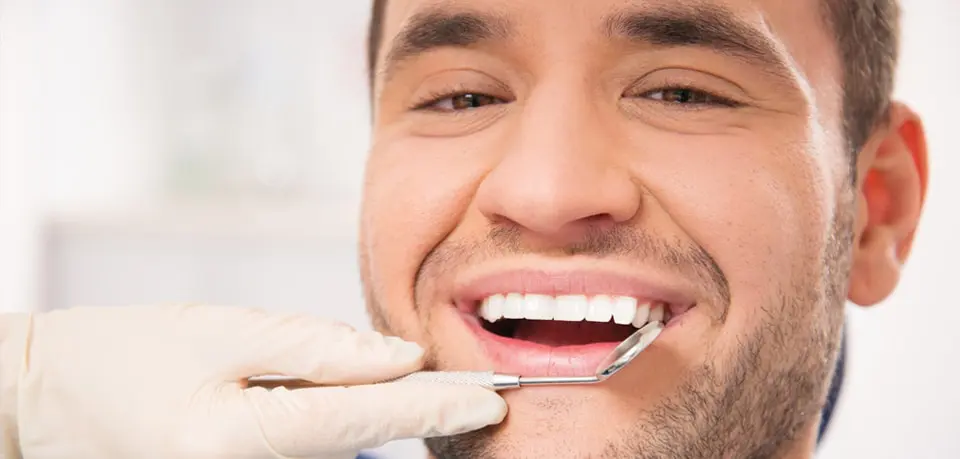
Many adults spend years hiding their smiles due to chipped, discolored, cracked, crooked, or otherwise flawed teeth. With advances made in cosmetic dentistry over the last several years, drastically improving an imperfect smile is a realistic option for many. Dental veneers-- sometimes referred to as porcelain veneers-- are thin, custom-made shells that cover the front surface of the teeth. The result is teeth that are changed in color, shape, or size-- and a patient who's no longer afraid to show her smile to the world.
Am I a candidate for veneers?
Dental veneers are used to correct a number of teeth concerns, including:
- Discoloration. Whether your teeth are discolored due to a root canal treatment, medication stains, excessive fluoride, tobacco use, or other causes, porcelain veneers are an excellent fix.
- Undesired spacing. Has the spacing of your teeth always made you feel self-conscious? Do you want to get rid of that undesired gap once and for all? Veneers might be a good option for you.
- Chipped or broken teeth. If you have several teeth that are chipped or otherwise broken, veneers might be a more effective option than repairing individual teeth.
- Worn-down teeth. If your teeth have become worn down over the years due to clenching, grinding, acidic foods and drinks, or other causes, dental veneers can help restore them to their original length.
- Irregularly shaped teeth. Sometimes, teeth are uneven or irregularly shaped with craters or bulges. In these cases, veneers are potentially a good treatment option.
What can I expect the dental veneer process to be like?
First of all, getting dental veneers is typically not a one-appointment process. Most often, you can plan for three to four trips to the dentist, including:
- Consultation. During your first appointment, you will need to explain to your dentist in detail what exactly your concerns are and what you're hoping to achieve with veneers. Then, your dentist will examine your teeth to make sure you're a good candidate for veneers. Finally, she will discuss the process with you, including what you can expect before, during, and after the procedure. She might also take some X-rays at this appointment.
- Preparation. At your next appointment, your dentist will begin to prepare your teeth for veneers. She will start by removing about one-half millimeter of enamel from the surfaces of the teeth she is treating. Then, she will make an impression of your teeth to send to a dental laboratory to use for veneer construction. The construction process typically takes a week or two. Sometimes, temporary veneers are used in the meantime.
- Bonding. Once your veneers arrive from the laboratory, your dentist will try them on your teeth to ensure that they're the right size and shape. She will make any necessary adjustments by trimming the veneers until the fit is just right. Next, your teeth will be prepared for the veneers. The preparation process involves cleaning, polishing, and etching. Etching simply makes the surface of the teeth rougher to make the bonding process more effective. Then, the veneers are applied to your teeth using a special type of cement. A light beam will then be used to harden the cement and securely bond the veneers. Finally, any excess cement will be removed.
- Follow-up. Many dentists will request that you follow-up within a week or two. At your follow-up appointment, your dentist will check to see how your gums are responding to your new veneers. She will also check the fit once again and make any necessary adjustments.
Are you ready to stop hiding your smile from the world? Contact us today to learn more about dental veneers and our other cosmetic dentistry options!

